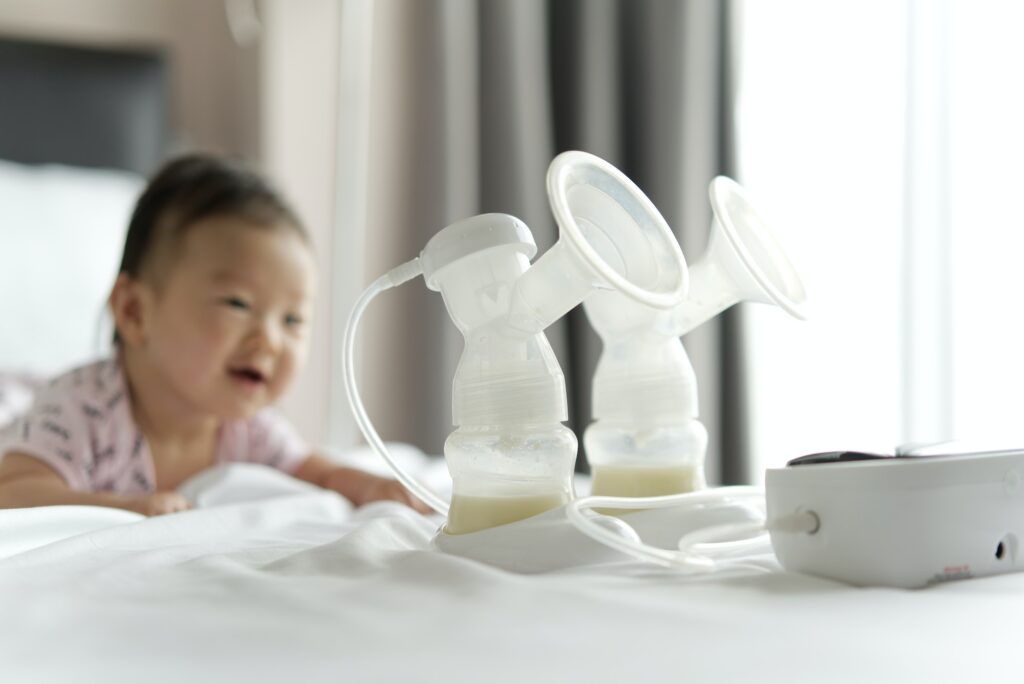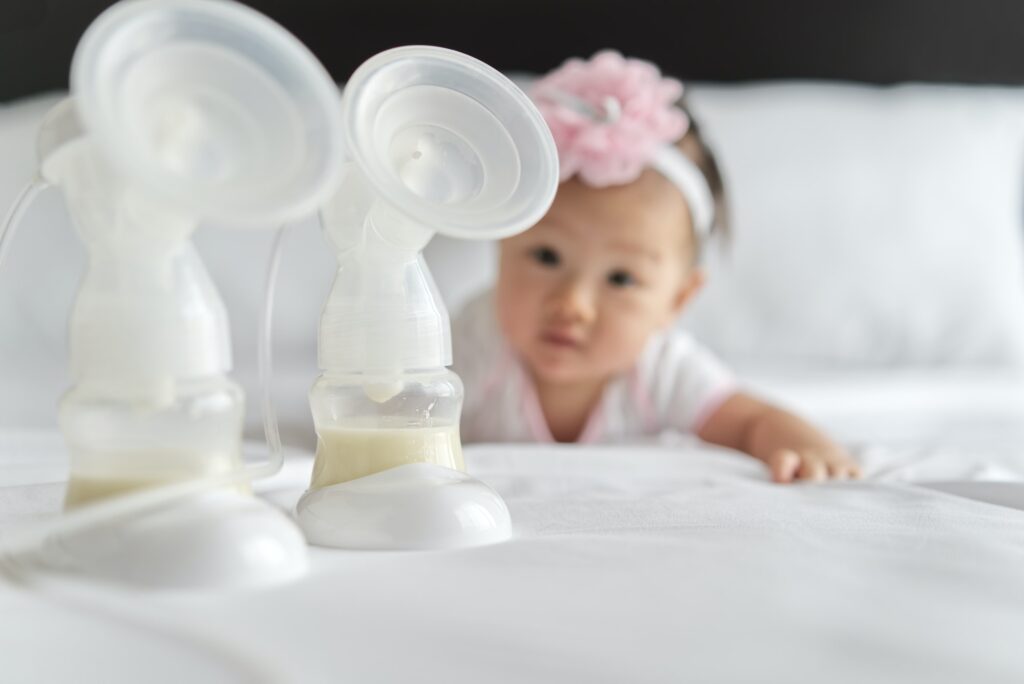Table of Contents
ToggleHey there, super-parents! Spotted those intriguing white spots on your frozen breast milk and scratching your head? First things first, take a moment and relax. We’re about to delve deep into the white spots on frozen breast milk conundrum to give you the full scoop. While these spots might seem like a riddle, armed with the right insights, you’ll decode them in a snap.
Understanding breast milk storage is pivotal, ensuring every ounce you offer your kiddo is as precious as your boundless affection for them. With a mix of expert guidance and a dash of friendly advice, we’re right by your side on this enlightening journey. Whether you’re new to the parenting gig or a seasoned pro, stay tuned. By the time we wrap up, you’ll be brimming with knowledge, ready to face any challenge. And believe us, the next bit of info we’re diving into? Absolute gold. Stick around!
Unraveling the White Spots Phenomenon

Alright, let’s get down to the nitty-gritty. Those white spots on frozen breast milk that might’ve given you a mini heart attack? More often than not, they’re a result of fat separation. It’s a natural thing, kinda like how your store-bought salad dressing separates over time. No biggie!
Now, let’s chat about oxidation. Imagine leaving a sliced apple out on the counter. After a while, it turns brown, right? That’s oxidation in action. Similarly, certain chemical reactions can lead to changes in the appearance of your breast milk. But hey, it doesn’t mean it’s gone bad.
And then there’s lipase. This enzyme plays a big role in breaking down fats in the milk. Sometimes, it can get a tad overenthusiastic, leading to those mysterious spots. It’s all part of the milk’s natural process.
So, while these spots might seem like uncharted territory, understanding them is your first step in feeling confident about your milk’s quality. And as we dive deeper, you’ll discover how to ensure every ounce you offer is top-notch for your little one. Ready to find out if those white spots mean the milk’s still safe? Let’s roll!
The Real Deal: Is It Safe for Your Baby?
Now, let’s bust some myths. You might’ve heard tales about frozen breast milk going bad super quickly or that those white spots are a red flag. But here’s the scoop: freezing preserves the milk’s quality. Those spots? Often just natural processes at play. So, before jumping to conclusions, it’s essential to get the facts straight.
With this knowledge in hand, you’re better equipped to ensure your little one gets the best. And speaking of the best, let’s dive into how to ace the game of breast milk storage. Ready to become a storage pro? Onward!
Common Misconceptions
Now, let’s debunk some myths. You might’ve heard whispers about white spots on frozen breast milk being a cause for concern, or tales of frozen breast milk spoiling in a flash. But here’s the real deal: freezing maintains the milk’s integrity. Those white spots? They’re frequently just natural processes doing their thing. So, before making any snap judgments, it’s crucial to have your facts lined up.
With this knowledge in hand, you’re better equipped to ensure your little one gets the best. And speaking of the best, let’s dive into how to ace the game of breast milk storage. Ready to become a storage pro? Onward!
Storing Breast Milk: Best Practices
Alright, let’s get into the heart of the matter. You’ve pumped that liquid gold, and now it’s all about keeping it in tip-top shape for your little one. So, how do you ensure that every drop remains as precious as when it was pumped?

First things first, recognizing the signs of good vs. bad breast milk. Freshly pumped milk has a slightly sweet aroma and a mild taste. If it’s gone off, it’ll have a sour smell and taste. Appearance-wise, while it’s normal for milk to separate into layers, a quick swirl should mix it right back up.
Common Misconceptions
Let’s clear the air on some myths. Heard that frozen breast milk goes bad in a jiffy? Or that those white spots are a no-go? Time for a reality check. Freezing is a champ at preserving milk’s quality. And those spots? Often, they’re just a part of the milk’s natural makeup. The key is understanding proper storage techniques. That means using the right storage bags, being mindful of time limits, and ensuring the right temperature.
Tips for Parents: Making the Most of Your Milk
For all you busy bees out there, we’ve got some quick hacks to make your milk-storing game strong. Invest in quality storage bags – they’re worth their weight in gold. And remember, the back of the freezer is your milk’s BFF – it’s the coldest spot. Got a power outage? Keep that freezer door shut to retain the cold.
With these best practices under your belt, you’re all set to give your baby the best. And speaking of questions, we know you’ve got ’em. Let’s tackle some of the most burning ones next, shall we?
FAQs: White Spots on Frozen Breast Milk
Alright, let’s tackle those questions that have been niggling at the back of your mind. We know that when it comes to your little one, there’s no such thing as being too informed. So, let’s dive right in!
How long can breast milk stay in the freezer?
Good news! When stored correctly, breast milk can chill in the deep freeze for up to 12 months, though using it within 6 months is ideal to preserve its top-notch quality.
How to tell if breast milk is bad?
Trust your senses here. If the milk has a sour smell or taste, it’s time to toss it. Also, while separation is normal, if the layers don’t mix with a gentle swirl, it might be past its prime.
Is it okay for frozen breast milk to have air bubbles?
Totally! Air bubbles can form during the freezing process. They’re no biggie and don’t affect the milk’s quality.
Does frozen breast milk contain bacteria?
Freezing doesn’t kill bacteria but puts them in a sort of “sleep mode.” However, breast milk naturally contains good bacteria that benefit your baby. Just ensure proper storage to keep the bad guys at bay.
There you have it, straight-up answers to your top questions. But hey, while we’re on the topic of being top-notch, ever wondered why this guide stands out from the rest? Let’s spill the beans on why we’re leading the pack!
Conclusion: Empowering Parents with Knowledge
So, why’s this guide the bee’s knees when it comes to understanding those white spots on frozen breast milk? Simple. We’ve poured our heart and soul into ensuring it’s the most comprehensive guide out there. From the nitty-gritty details to debunking myths, we’ve got you covered from A to Z.
But hey, don’t just take our word for it. Dive in, soak up the knowledge, and you’ll see why we’re top of the pops. And if you’re vibing with what you’re reading, why not share the love? Pass it on to your parent pals, engage in some chit-chat, and spread the word. After all, knowledge is power, and we’re all about empowering you rockstar parents. Ready for the grand finale? Let’s wrap this up with some golden nuggets of wisdom!
Understanding breast milk storage isn’t just about those white spots; it’s about ensuring every drop you give is pure gold. So, keep diving deep, stay curious, and arm yourself with knowledge. Because when it comes to your little one, being in the know isn’t just power—it’s love in its purest form. Keep rocking it, superstar parents!
Related Articles:









